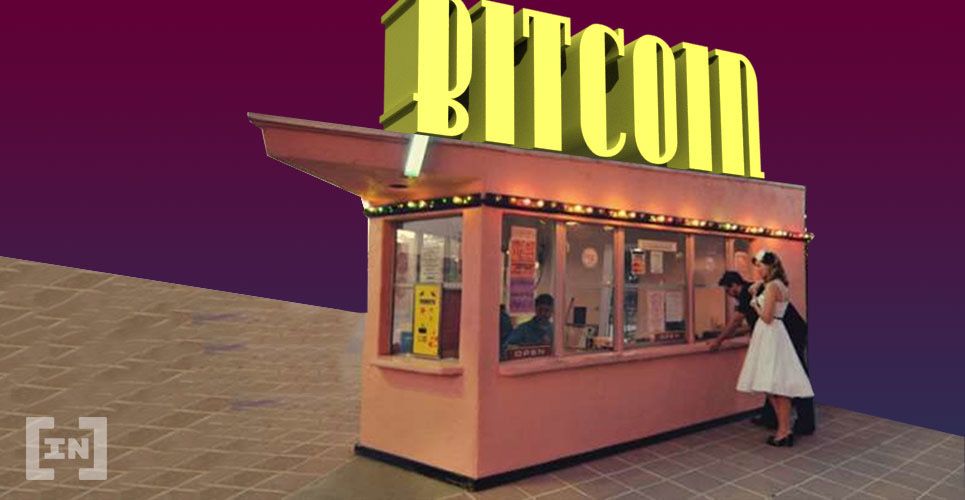2022-10-28 05:02 |
In an article on Bitcoin discourse, the technology is far too generalized and its merits and users are discounted.
This is an opinion editorial by Maximilian Brichta, a doctoral student at the University of Southern California currently working on his dissertation, “Vernacular Economics: On The Participatory Culture And Politics of Bitcoin”
Speculative Bubbles, Technobabble And The Ignorant “Enthusiast”: Part OneThere is a strand of academic literature that treats Bitcoin’s advocates and investors as ignorant enthusiasts, dupes and ideologues. Notably, each of these scholars fails to engage with texts that come directly out of Bitcoin culture. Instead, their analyses are largely based on second-hand accounts, mainstream news articles and investing forums that conflate bitcoin with other cryptocurrencies. The result is a flattened image of Bitcoiners and overly simplified, sometimes misleading characterizations of Bitcoin’s social world. In this three-part series, I’ll focus on three such texts and offer a framework that I believe would help academics bring much needed nuance to critical analyses of Bitcoin and its culture.
In his article “In Digital We Trust: Bitcoin Discourse, Digital Currencies And Decentralized Network Fetishism,” Jon Baldwin argues that Bitcoin is not a trustless system as Satoshi Nakamoto claimed. Instead, the trust shifts from governments and banks to algorithms and the security of encryption software. He views Bitcoin as just another technology with an overblown promise to decentralize the web and subvert traditional hierarchies in business and culture — a dream that he suggests has largely evaporated in the corporate-captured digital economy. In general, he cautions that Bitcoin is first and foremost software. As such, it is susceptible to the same sort of breaches and bugs that threaten any other software.
Baldwin makes some astute claims about Bitcoin that are important to consider when highlighting its social implications and examining discourse around it. For instance, he argues that “Today’s digital monies can be viewed as forms of language — or more specifically, writing or code — in their own right.” Code is already a form of human expression. Furthermore, the platforms utilizing that code make some types of actions and interactions possible while constraining others. In other words, whatever uses are not rendered impossible by the code remain feasible.
Another key observation is that, when it comes to analyzing how Bitcoin becomes trusted as an investment and technology, there is plenty of noise in the form of “hyperbole, half-truth and excitement.” There are also dizzying conflations between “bitcoin as a currency, bitcoin as a technology, bitcoin as the free market realized, bitcoin as a commodity, bitcoin as investment, cryptocurrency as in bitcoin, cryptocurrency in general, the blockchain as in bitcoin or the blockchain as in general.” Despite the claims that bitcoin will evolve into a safe-haven asset like gold and may eventually function as a widely accepted form of money, many continue to treat it as a risk-on asset. As such, there is no shortage of hype, schadenfreude, seemingly untenable price targets and ecstatic behavior that are characteristic of language around eye-popping bull runs. Furthermore, you can almost guarantee that mainstream media and lay commentators will bungle or ignore the complexity of Bitcoin. Indeed, it becomes difficult to understand the asset and the network behind the discourse, how it differs from altcoins, and what broader implications it may have on our social condition. There is, as Baldwin suggests, plenty of techno-utopian discourse, grandiose prophesying and noise around Bitcoin.
Despite these valuable observations Baldwin makes about Bitcoin discourse overall, there are significant gaps and ill-supported claims throughout this essay. The title of the article, “In Digital We Trust,” suggests an exploration of this shifting notion of trust “from trust in banks or states to trust in algorithms and encryption software.” He substantiates this claim by recounting Bitcoin’s emergence at the heels of the 2008 financial crisis and citing Nakamoto’s rationale for a system of e-cash that does not rely on trust in central banks. Beyond this, Baldwin does not make a compelling case for where that trust shifts. His claims remain speculative and only tell part of the story.
Baldwin fails to take seriously the most grounded understanding of trust he references in his essay, specifically in reference to individuals who use the network. To explore how trust in Bitcoin arises is a matter of discovering how a variety of actors who use the network — investors, transactors, miners, developers — have come to trust it. Baldwin considers this possibility in a footnote reference to Bill Maurer, Taylor Nelms and Lana Swartz’s article on the “Practical Materiality Of Bitcoin.” These authors suggest that, “Trust in the code does not erase entirely the community that bestows it.” To this, Baldwin remarks that it’s “debatable” whether that community still exists after bitcoin’s price plunged approximately 80% following its 2017-2018 bull run. It’s a dismissive remark, to be sure. And to dismiss the actual users of bitcoin is to miss an opportunity to tease out this question about how trust in Bitcoin arises, which is a more complex social process than he leads us to believe.
Elsewhere, Baldwin leaves significant holes open in his argument about this notion of shifted trust. Consider this passage in which Baldwin relates trust to value:
“[W]hat backs up the value the bitcoins seemed to have on paper? Essentially a new form of trust: ‘The primary value of the coins was the expectation that they would be worth more in the future, allowing current holders to cash out for more than they paid’ (Popper, 2015, p. 285). Should the trust and willingness of market participants to exchange fiat currency for bitcoin erode and end then this will result in the potential for permanent and total loss of value of bitcoin. In this sense, bitcoin can be argued to resemble a Ponzi scheme.”
First, it is unclear what Baldwin is claiming to be “new” about this form of trust. He seems to be arguing that bitcoin’s value is akin to a collectible that is bare of any non-fungible or useful characteristics. For Baldwin, a bitcoin is “a pure token devoid of any connection to underlying material substance,” a “simulacra without reference to the real.” Devoid of intrinsic value, its price relies on pure speculation within the market. Perhaps this is a new form of trust — market participants must accept that Bitcoin, which at its most basic level is information, is a form of property. How might this affect the nature of trust that participants grant bitcoin? Baldwin does not take his analysis this far. He stops at the unexplored assertion that bitcoin’s value is a mere product of the shared belief that bitcoin will appreciate.
Later in the article, Baldwin considers some of the use cases and disruptive capacities that bitcoin might be able to fulfill but makes it clear that he is not interested in entertaining any of them: “on one hand, there is interesting potential to be explored in Bitcoin and a challenge to established financial power,” and on the other, empty techno-utopian rhetoric and a venture capitalist cash grab. In short: This argument is based on the presupposition that Bitcoin has no value. His tone further suggests that the typical people on the opposing side of this claim are hardly worth taking at their word.
Baldwin’s claim that bitcoin resembles a Ponzi scheme appears to be based on this assumption. Ponzi schemes are a form of investment fraud in which wealth is redistributed from new investors to existing investors. As such, the earnings are illegitimate. The scheme collapses when new investors stop buying in and earlier investors cash out. As with every other time I’ve heard bitcoin called a Ponzi scheme, Baldwin makes no attempt to prove it as such.
When I read commentators calling bitcoin a Ponzi scheme — which usually reads as a cheap skewer rather than a thoughtful critique — I have analytic questions about this comparison: How does bitcoin resemble or differ from a Ponzi scheme? Ponzi schemes are typically organized by a leader. Who fulfills this role? What does that organization look like? Also, Bitcoin is a public ledger with data about every transaction that has taken place on the network. Based on this data, how is wealth distributed? Does it resemble the sort of distributions characteristic of Ponzi schemes? What is the social value of the underlying network regardless of bitcoin’s price? Baldwin asks none of these questions. The reader is asked to take him at his word.
Another term that Baldwin leaves unanalyzed, despite regarding it as a key analytical issue, is this notion of “security.” While the features of the protocol are foundational for making a secure blockchain possible, trust is also distributed to a decentralized crowd of actors. Motivated actors play a tremendous role in the security and viability of Bitcoin as a monetary network. The question Baldwin leaves unconsidered is how the code incentivizes perpetually honest participation in the network and how these economic incentives are at the core of constructing trust. In addition, he notes that folks rely on noisy and turbulent discourse around bitcoin. Ultimately, trust relies on an ongoing narrative process pertaining to the network. For instance, at the time of writing, there was an avid discussion within the Bitcoin community regarding trust around the implementation of a new bitcoin improvement proposal, BIP119.
Here are some key questions underlying this debate: Who is trusted to code Bitcoin upgrades? Who is trusted to authoritatively comment on them within the community? To what level of scrutiny must the community subject proposals to? And can the nodes who validate these upgrades be trusted to understand the change they are making to the protocol? Clearly, the case for shifting trust is far more complicated than Baldwin leads his readers to believe.
The discourse around Bitcoin is featured as a key topic explored in this essay, however Baldwin appears to base these claims off a narrow selection of secondhand sources. In the section titled “Bitcoin Discourse,” the quotes he pulls are mostly hypertext borrowed from David Golumbia’s book “The Politics Of Bitcoin” and Nathanial Popper’s book “Digital Gold.” In fact, the only primary source he cites as Bitcoin discourse is alleged “ideologue” Brian Kelly’s book “The Bitcoin Big Bang.” The rest of the section draws on a selection of cultural and technology critics which he leverages to make claims about this abstracted discourse. While these claims may or may not hold up, the reader is left with a framework for thinking about digital culture and technology in general and not Bitcoin in particular. The lack of attention Baldwin pays to originally-sourced Bitcoin discourse stays apparent throughout the remaining sections.
The section “Bitcoin as right-wing ideology,” begins with the sweeping claim that “Much of the digital economy has right-wing origins, whether these are made explicit or eschewed.” This claim is evinced by a hypertextual reference to Uber’s former CEO Travis Kalanick’s choice of Ayn Rand’s book “The Fountainhead” as the image used for his Twitter avatar. Again, Baldwin fails to back this claim with any direct examples. He then quotes Golumbia’s overstated claim that “Bitcoin and the blockchain technology on which it rests satisfy needs that only make sense in the context of right-wing politics.” It might be fair to say the values afforded by Bitcoin’s underlying technology — anti-censorship, freedom, property rights and unconfiscatability, for example — often make it appealing to right-leaning, libertarian crowds — but there are liberal and even progressive needs that it arguably satisfies. These include access to an alternative monetary system for the financially oppressed, a tool for migrant workers to make low-cost remittances, and a comparative tool for critiquing the “hidden costs” of the U.S. dollar hegemony, as Alex Gladstein demonstrates in his book “Check Your Financial Privilege.” This counterclaim is worth historicizing. The bitcoin narratives of today may differ significantly from those of 2017-2018 when Baldwin was writing this piece. The progressive potential for bitcoin may not have figured prominently in these narratives.
The following two sections “Decentralization And Its Discontents,” and “Network Fetishism,” suffer from the same grounding issues as the section about Bitcoin discourse. This first section is peripherally about Bitcoin and more directly a critique of decentralization and the internet as a system influenced by “a cheap, and therefore weak,” network design. He claims that decentralization is not exactly a solution to the insecurity of a centralized node; “Instead, the threat simply changes locations.” “The threat[s]” in this case are computer viruses that he suggests could potentially disturb any network. Notably, none of this critique is Bitcoin-specific, which brings the reader to an intellectual dead-end of dismissing a whole system without understanding its parts.
Baldwin rounds the section out by recounting a story of a Bitcoin exchange that got hacked, which consequently crashed bitcoin’s price. It is unclear how this is supposed to support his argument. An exchange is a centralized business that is not built on or representative of the Bitcoin network. While there have been no hacks on the bitcoin network itself, there have been several high-profile hacks of exchanges, which have proven to be centralized honeypots for hackers. While Bitcoin has not faced viruses, there have been two bugs — one that was discovered in 2010 and another in 2018. Both made it possible to exploit the protocol and mint new coins in addition to the capped supply. Both were patched without much network disturbance.
In the “Network Fetishism” section, Baldwin casts suspicion on the utopianism around decentralized networks and seeks to highlight their inherent “poverty.” Specifically, he problematizes the new age trend of finding value in immaterial things like software as opposed to things with concrete materiality. Incredulity toward this shift appears to be a core motivation of this article. Once again, Bitcoin only peripherally figures into his argument. The one Bitcoin-specific claim he makes is that the network uses a potentially “unsustainable” amount of power. He nearly copies and pastes Golumbia’s words to make this point:
Golumbia: “The amount of power consumed by blockchain operations is large enough that it has suggested to some that Bitcoin itself is “unsustainable” (Malmo 2015).”
Baldwin: “It is the case that the amount of power consumed by blockchain operations is so large that it has been suggested that bitcoin itself is “unsustainable” (Malmo in Golumbia, 2016).”
He goes on to suggest, “The materiality of the network, and the exploitative relations inherent in such materiality, are a blind spot in network fetishism.” It is unclear in both Golumbia and Baldwin’s texts exactly what is meant by this. A fair reading would be that they are referring to the environmental impact of Bitcoin mining. They suggest the idealized benefits of the network blind its proponents to its real negative impact. In essence, this argument is similar to his suggestion that the “cyberpunks and crypto-anarchists” who influenced the development of Bitcoin “seem to accept, often without even appearing to realize it, the far-right, libertarian/anarcho-capitalist definition of government.” In both cases, proponents of networks are apparently unable to see the drawback of their utopian beliefs. Drawbacks are rhetorically deflected or left under-considered.
Baldwin suggests that “network fetishism” is blind to the power of influential nodes to control the network. He backs up this claim with another sentence from Golumbia that relies heavily on the original language and does not clearly attribute the hypertext:
Golumbia: “...in part because the system is exposed to the ‘51 percent problem’: if one entity controls more than 51 percent of the mining operations at any one time (something which was at one point unthinkable, but which now has happened at least once), it could, at least theoretically, “change the rules of Bitcoin at any time. (Felten 2014; also see Otar 2015)”
Baldwin: “This also makes the bitcoin system exposed to the ’51 percent problem’: if one node or cluster of nodes owns more than 51 percent of the mining operations it could, at least theoretically, “change the rules of Bitcoin at any time. (Golumbia, 2016, p.43)”
Furthermore, he argues that “The promise of decentralization has not been kept and network fetishism has concealed the fact that certain nodes function as centralized power bases.” He infers this argument based on a claim by Golumbia that Bitcoin development was highly contentious within the community and it was heavily influenced by “the two individuals with full access to the Bitcoin code,” (Golumbia 85). For one, the story he is referring to was over a dispute between one camp of Bitcoiners wanting to change Bitcoin’s underlying protocol and another wanting to keep it the same. Each side had a figurehead. But mind you, Bitcoin is open-source code. The repositories of improvement proposals are hosted on the web for anyone to access. He correctly highlights that there are still competing motivations within the Bitcoin community that represent pockets of greater influence. Jonathan Bier chronicles this dispute in his book “The Blocksize War,” in which he demonstrates how Bitcoin resisted a significant protocol change despite influential figures in the community ardently pushing for it.
Overall, Baldwin poses some key questions about the nature of trust among a range of Bitcoin participants and how hyperbolic discourse around bitcoin may function. His outlook on Bitcoin is clearly pessimistic and he suggests its best days were likely behind it. Clearly, he leaves many gaps to be explored and propositions to be reconsidered. At best, Baldwin offers a framework to test out on concrete examples of Bitcoin discourse. Furthermore, several of his key claims were based on critical arguments about the internet and digital culture more broadly without clearly demonstrating how they apply to Bitcoin specifically.
This is a guest post by Maximilian Brichta. Opinions expressed are entirely their own and do not necessarily reflect those of BTC Inc or Bitcoin Magazine.
origin »Bitcoin (BTC) на Currencies.ru
|
|

















